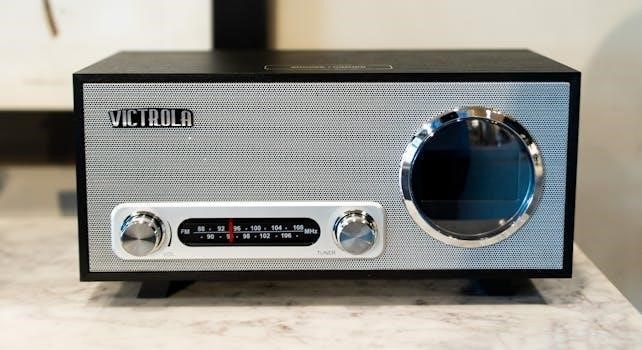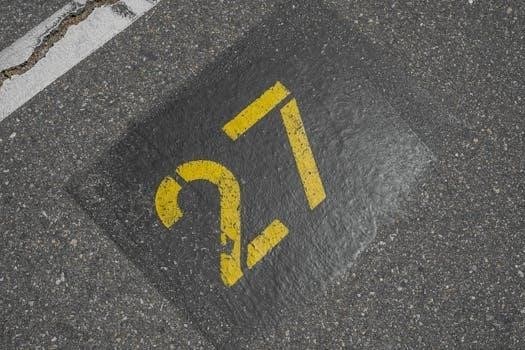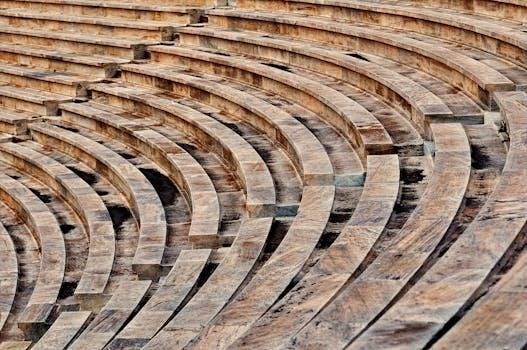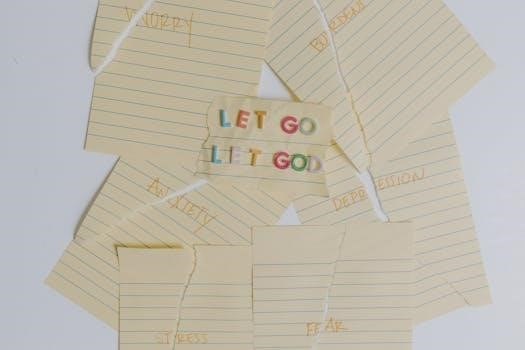Surface area and volume worksheets are essential tools for students learning about 3D shapes. These worksheets provide practice in calculating measurements and understanding geometric concepts. Many resources offer PDF downloads, often including answer keys for self-assessment and learning.
What are Surface Area and Volume?
Surface area refers to the total area of all the faces or surfaces of a three-dimensional object. Think of it as the amount of material needed to cover the outside of a shape. For instance, the surface area of a box is the sum of the areas of all six rectangular faces. Calculating surface area often involves finding the area of individual shapes, such as squares, rectangles, circles, and triangles, and then adding them up. Volume, on the other hand, is the amount of space a three-dimensional object occupies or the capacity of the object. It’s measured in cubic units. Imagine filling a container with water; the amount of water it holds represents its volume. Calculating volume involves different formulas depending on the shape, such as multiplying the base area by the height for prisms or using more complex formulas for spheres and cones. Understanding both surface area and volume is fundamental in geometry and essential for many real-world applications, such as packaging, construction, and engineering.
Why Use Worksheets?
Worksheets are invaluable tools in mathematics education, particularly when learning about surface area and volume. They provide structured practice, enabling students to reinforce their understanding of formulas and concepts. Worksheets offer a variety of problems, ranging from basic calculations to more complex, multi-step challenges. This variety helps students develop problem-solving skills and apply their knowledge in different contexts. The inclusion of answer keys allows for immediate feedback, enabling students to identify and correct their mistakes independently. This self-assessment promotes a deeper understanding and helps in building confidence. Furthermore, worksheets are readily available in PDF format, making them easily accessible for both classroom and home use. They are a convenient way to consolidate learning, prepare for assessments, and track progress. The structured nature of worksheets ensures that students cover all necessary topics and gain a comprehensive understanding of surface area and volume calculations. Regular practice with worksheets is crucial for mastering these concepts.

Types of Shapes Covered
Worksheets typically cover various 3D shapes, including rectangular prisms, cylinders, cones, pyramids, and spheres. Understanding these shapes is crucial for mastering surface area and volume calculations. Practice with different forms improves spatial reasoning;
Rectangular Prisms and Cubes
Rectangular prisms and cubes are fundamental 3D shapes often featured in surface area and volume worksheets. These shapes are characterized by their flat faces, with rectangular prisms having six rectangular faces and cubes possessing six square faces. Calculating their surface area involves finding the area of each face and summing them together, while the volume is determined by multiplying the length, width, and height. Worksheets often include problems where students calculate both the surface area and volume given the dimensions, or where some measurements are missing. These exercises help students solidify their understanding of these basic shapes and their properties. Furthermore, problems frequently involve real-world scenarios, improving practical application of the concepts. Answer keys are essential for verifying solutions and learning from mistakes.
Cylinders
Cylinders are another common shape explored in surface area and volume worksheets. These three-dimensional objects have two circular bases and a curved surface connecting them. When calculating the surface area of a cylinder, students need to consider both the area of the two circular bases and the curved surface area. The curved surface area can be visualized as a rectangle when the cylinder is “unrolled”. Volume, on the other hand, is found by multiplying the area of the base by the height of the cylinder. Many worksheets include problems where students calculate both the total surface area and volume, given the cylinder’s radius and height. Worksheets might also include problems focused on finding the curved surface area and the areas of the circular ends separately. Answer keys are particularly useful for checking computations involving pi and complex calculations.
Cones and Pyramids
Worksheets focusing on cones and pyramids introduce students to more complex shapes and formulas. Cones have a circular base and a curved surface that tapers to a point, requiring calculations for both the base area and the lateral surface area, often involving the slant height. Pyramids, with their polygonal bases and triangular faces, present a different challenge. Students need to calculate the area of the base and the areas of all the triangular faces to find the surface area. Volume calculations for cones and pyramids also differ. For cones, the volume depends on the base area and height; for pyramids, it involves the base area and the perpendicular height. These worksheets often include problems where students solve for unknown side lengths or dimensions given the volume or surface area, enhancing problem-solving skills. Answer keys are crucial for these complex calculations.
Spheres
Spheres, with their perfectly symmetrical round shape, present a unique set of calculations for surface area and volume. Worksheets for spheres typically focus on applying formulas that use the radius to find these measurements. Calculating the surface area of a sphere involves a specific formula that differs from other shapes, highlighting the relationship between the radius and the total surface. The volume of a sphere is also calculated using a unique formula, reinforcing the connection between the radius and the space enclosed by the sphere. These worksheets often provide practice in substituting given radius values into the formulas and solving for surface area or volume. Some problems might require students to work backward, solving for the radius when given the surface area or volume. The inclusion of answer keys is essential to verify the accuracy of these calculations. These exercises improve students’ algebraic and problem-solving abilities.

Worksheet Content and Features
These worksheets offer diverse problems, ranging from basic calculations to complex, multi-step scenarios. They also include answer keys for checking work and understanding the solutions. The variety ensures that students of different levels are challenged.
Variety of Problems
Surface area and volume worksheets present a wide array of problems to cater to different learning needs and skill levels; These problems often include calculating the surface area and volume of rectangular prisms, cubes, cylinders, cones, pyramids, and spheres. Some worksheets focus on basic calculations with whole numbers, while others involve more complex calculations with decimals, fractions, and even algebraic expressions. Problems may require students to apply formulas or work backwards to find missing dimensions when given the surface area or volume. Additionally, some worksheets include real-world problems, helping students see practical applications of these concepts. The variety also extends to the types of questions, including multiple-choice, fill-in-the-blanks, and open-ended problems. This diversity ensures that students are exposed to a wide range of challenges, supporting a deeper and more comprehensive understanding of surface area and volume calculations.
Answer Keys and Solutions
A critical feature of effective surface area and volume worksheets is the inclusion of answer keys and solutions. These resources are essential for students to check their work, identify mistakes, and understand the correct problem-solving process. Answer keys typically provide the final numerical answer to each problem, allowing students to quickly assess their accuracy. However, the most beneficial resources often include detailed solutions that show step-by-step calculations. These solutions are valuable learning tools, as they help students understand the logic and formulas involved in finding surface area and volume. Detailed solutions can also point out common errors and help students avoid making them in the future. Some resources even provide explanations of the steps, making it easier for students to grasp the concepts. The availability of answer keys and solutions significantly enhances the educational value of these worksheets and promotes self-directed learning.

Where to Find Worksheets
Numerous online platforms offer surface area and volume worksheets, often in PDF format. These resources are readily available for download, catering to various grade levels and skill sets, with many options available for free.
Online Resources and PDF Downloads
The internet offers a wealth of resources for finding surface area and volume worksheets. Many educational websites, including those aligned with common core standards, provide downloadable PDFs. These resources often cover a range of topics, from basic rectangular prisms to more complex shapes like cones and spheres. You can easily find worksheets suitable for various grade levels, typically ranging from 5th to 8th grade. These online platforms frequently offer free access to numerous practice problems with accompanying answer keys. Additionally, some sites provide editable versions, allowing educators to customize the content for their students’ specific needs. This accessibility ensures that both students and teachers can readily obtain the materials they require for effective learning and teaching. Furthermore, the convenience of PDF downloads makes these worksheets easily printable for classroom or home use, facilitating practical learning experiences. The variety of resources available online ensures that there is always a suitable worksheet option for different learning styles and academic goals, making it an invaluable resource for mathematics education.
Free vs Paid Options
When searching for surface area and volume worksheets, you’ll encounter both free and paid options. Free resources are readily available on numerous educational websites, often offering a wide range of worksheets with answer keys in PDF format. These free options are excellent for basic practice and review. However, paid resources might offer more comprehensive content, including a greater variety of problem types, more detailed solutions, and additional features like editable formats. Paid options can also come from reputable publishers and may be aligned with specific educational standards or curricula. While free worksheets can be a valuable starting point, paid options might be more suitable for teachers looking for in-depth materials and a comprehensive package. Furthermore, paid resources may offer better-organized content and enhanced accessibility features, potentially saving time and effort. Therefore, choosing between free and paid options should depend on individual needs, budgets, and the specific learning goals. Ultimately, both free and paid options have their respective advantages, offering educators and students choices that best suit their unique requirements.

How to Use Worksheets Effectively
To maximize the benefits of surface area and volume worksheets, it’s crucial to use them strategically. Begin by reviewing the relevant formulas and concepts to ensure a solid foundation. Start with simpler problems to build confidence, gradually progressing to more challenging ones. Encourage students to show their work, detailing each step of the calculation. This process helps in identifying areas of weakness. Use answer keys for self-checking and to understand the correct solutions. Don’t just focus on getting the correct answer; understanding the process is key. If a student struggles, revisit the underlying concepts and provide additional practice. Incorporate worksheets into regular study routines, using them for both homework and in-class activities. Consider using varied worksheet types to keep practice engaging. Teachers can use these worksheets to provide targeted remediation or enrichment for students. Regular and consistent practice with these resources is essential for mastery of surface area and volume calculations. This approach will foster a deeper understanding of the subject matter.



